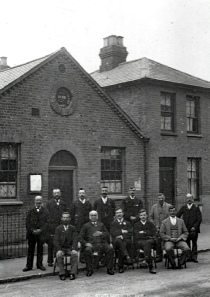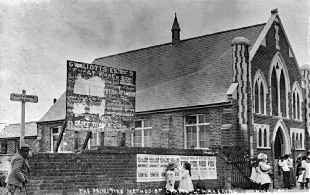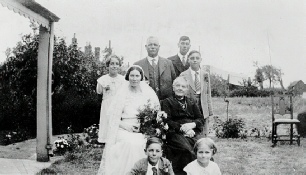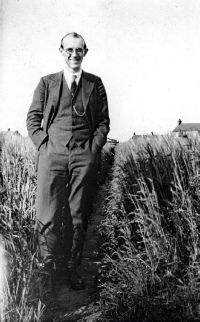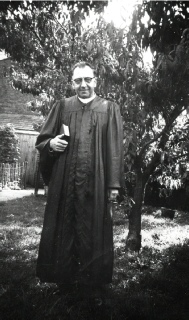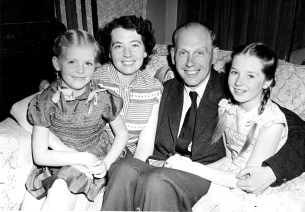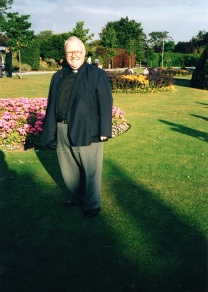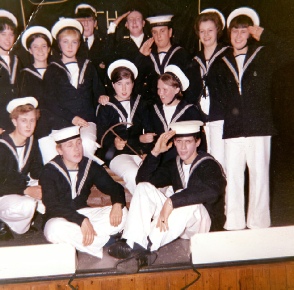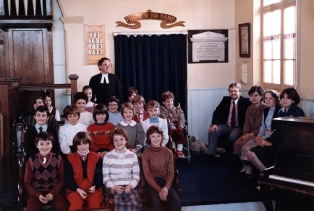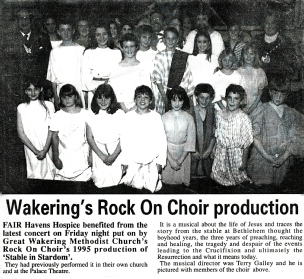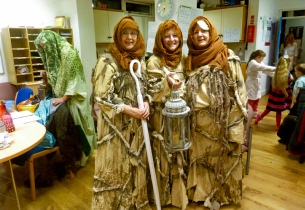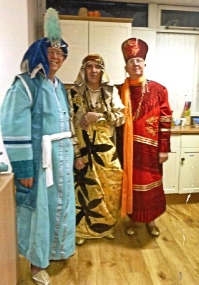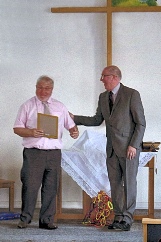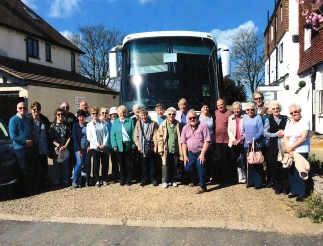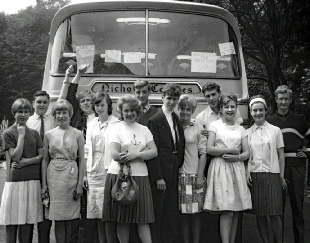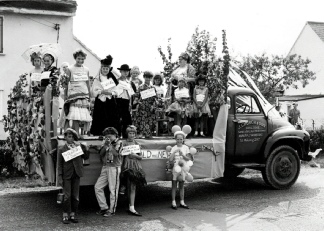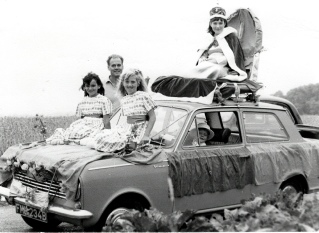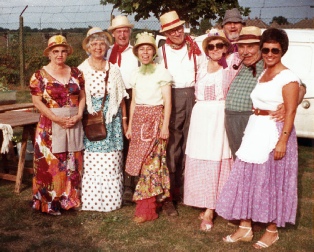Author's Preface
The story of Great and Little Wakering Methodist churches conforms to the pattern traced in so many other villages in the Rochford Hundred. The 18th and 19th centuries produced the founders of Methodism in what must be described as one of the remote areas of the country. Road communications were virtually nonexistent. John Wesley was able to travel from London to Old Leigh either on horseback or by chaise. It was left to another generation of Methodists, largely Primitive Methodists, to bring the Gospel to Wakering. Yet almost one hundred years later than Wesley's visits to Leigh, Methodism became firmly established, as will be seen from the story recounted here. George Thompson Brake - Hadleigh 1995.
Website Editor’s Note
The Author’s Preface and the following story are extracts which were taken directly from the book produced by George Thompson Brake in 1994 with the kind permission of the Southend and Leigh Circuit to whom we offer our grateful thanks. Much of the content was itself taken from a thesis written by Peter Jeffries with additional contributions by Peter Huxter and his wife Pauline who drew the picture of the church on the front cover. The following photograph is of a Concert Party Entertainment Group called ‘The Happy Ones’ , which was taken in 1964. Our original site has another photograph titled Great Wakering Methodist ‘Happy Ones’ which was taken on August Bank Holiday Monday in 1965 and showing Terry Galley with his accordion. You can view it HERE.
Great Wakering
In writing a history of Methodism in Great Wakering, it is important to realise that significant as it is for Methodists, their origin in this village came late in its story. Archaeological finds indicate that there were settlements as early as in the Bronze Age and through to Roman times. Remains of Saxon pagan burial grounds confirm that Wakering and the neighbouring village of Barling were sites of early Saxon settlements. Thus, we are setting the history of Methodism, which as Primitive Methodism began in the village in the 19th century, in the context of very early Britain.
Threat from the sea
The most important geographical feature of this area is its low lying character and the proximity of the sea. Essex and the sea have been antagonists for centuries; behind the present defences lie eight hundred years of effort to stem the sea's encroachment. The problem is not unique to Essex. It has been found that the earth's crust is not rigid, but has an elastic quality. As a result of this, North West Scotland and the Baltic appear to have lifted up out of the sea, as evidenced by the raised beaches. South-East England and the Netherlands have sunk, and are still sinking. The extent of this can be deduced from the fact that in Roman times there was no need for sea wall defences. The first were erected in the Middle Ages and have been increased in height ever since. They are now 15 feet high.
Despite the apparent antagonism of the sea, it provided one of the first occupations apart from fishing, for the village of Wakering. This was the production of salt, which can be traced back to 200 to 300 years before the Romans came. The domestic water supply was confined to two streams and wells, several of which may have been of pre-Roman times. There is evidence that as early as 500 B.C. there was a settlement about 500 yards north of the present High Street. When the Saxons came, some of them were probably employed by the Romans as mercenaries to protect the "Saxon shore". There was certainly a Roman fortress at Bradwell and a signalling station at Wakering. From here, messages were sent by reflections of the sun on bright surfaces across the estuary to Reculver on the north Kent coast. Another interesting feature on Roman times may have been "The Broomway" from Great Wakering stairs to Foulness. Approaching the village today, one can still see how it has been surrounded by rich arable land from earliest times. In Saxon times there were two Manors, Great Wakering Hall and Barrow Hall. The area was renowned for its Essex cheese, made from ewes milk. Drake provisioned his ships with Essex cheese because of its keeping quality. An early industrial development in Tudor times and possibly earlier was brickmaking.
Wakering in Elizabethan times
Possibly because the Methodist chapel was a late feature in this village, it is important to set the scene in some detail. Peter Jeffries has made the task not only easy but enthralling. In 1968 he prepared his thesis on "Great Wakering and Little Wakering in the reign of Elizabeth I". In his thesis he recorded the occupations represented in the village in Tudor times. There were "fifteen husbandmen, six yeomen, eight sailors (also described as mariners and seafaring men), two glovers and one each of the following - shearman, blacksmith, fisherman, bricklayer and tiler and gravel man". The occupation of a shearman means that weaving was carried on, because a shearman dealt with the finishing process.
Drink
Other characteristics of society in the Elizabethan period were reflected in the villages of the Rochford Hundred, and, of course, in Great Wakering and Little Wakering. The period is of special interest because a Licensing Act of 1552 granted absolute discretionary powers to the Justices. It was the first attempt to exercise statutory control of what hitherto had been a free-for-all, in which anyone paying the prescribed duty could obtain a licence as of right. This had resulted in widespread abuse. There was a long running dispute beginning in 1603 between the Justices of the Rochford Hundred and the Lord Chief Justice and the Lord Chief Baron, over the lax attitude of the Justices in administering the law.
In 1634 there is a reference to the "Wait (or Wayght) of Prittlewell", who was charged with keeping a common alehouse without a licence. Of interest here is that three years before, he was mentioned with "Frs. Goudringham" of Great Wakering and William Parsons of Southchurch, for "suffering disorder in the alehouses and play at unlawful games". Frs. Goudringham had been charged even earlier, in 1626, for keeping an alehouse without a licence. Two other local men faced similar charges in 1652, they were John Thergood of Little Wakering and Robert Barnes of North Shoebury. On the 15th May 1593 Richard Porter was licensed to keep a victualling house in Great Wakering.
Poverty
Poverty seems always to go hand-in-hand with the consumption of liquor. It is no surprise to find that just as a Licensing Act was passed to control the retailing of liquor, another was passed addressed to poverty.
There was a series of Acts of Parliament dealing with various aspects of poverty, the second of which in 1573 was "for the punishment of vagabonds and the relief of the poor and impotent". In March 1574 two Wakering men were charged under the Act for vagrancy, even though they were "healthy and robust in person and able to work". Later, Acts were passed to give help to the deserving poor, albeit inadequately. Poverty, together with poor harvests, under-nourishment and inadequate water supplies, were major factors in the harsh conditions of the working classes. The marshy land surrounding the village harboured what came to be known as "the ague", which in fact was malaria. As late as 1848, there was a cholera epidemic in which 30 per cent of the inhabitants died. These two diseases were products of the low lying land and poor quality of the water supply.
New life
It was in the circumstances here described that the parish churches of Great Wakering and Little Wakering bore witness to a gospel that was addressed to giving new life not only to individuals but to society. It may not have seemed like that at some periods in the long history of these churches. In A guide to St. Nicholas, the parish church of Great Wakering, Peter Jeffries wrote, "Great Wakering parish church is one of the oldest in the district, and features of almost every century since 1100 are evident. The village has always been a Puritan and Nonconformist stronghold; this is reflected in the plain undecorated church, but also the strength of the aged walls reflects the strength of the firm faith of our forefathers".
The Puritan tradition
What is of particular interest in considering the rise of Methodism in the village is the strong Puritan oral tradition. The Church of England was "by law established"; the emphasis being on establishment. It was immovable, threatened only by the Puritan protest against the royal prerogative and what were conceived as the trappings of a church too closely wedded to Catholic rather than Reformation principles. It is difficult in the 20th century to realise the grip the established church had upon the citizens. No one was outside the church. Parishioners were under an obligation to communicate; and baptism, marriage and burial belonged exclusively to the church.
The Wakerings became a centre of Puritan practice. Indeed, in Mary's reign they were once referred to as harbouring "a nest of heretics". The Puritan protest was gradual but persistent. In many places in south-east England, Puritan ministers and lay people held meetings for the study of the Bible and improvement of morals. At these meetings there was often open criticism of the rites, ceremonies and government of the church. In 1577 the Queen ordered Archbishop Grindal of Canterbury, to suppress them, but he declined and was suspended until 1582. He was succeeded by John Whitgift who under the Queen's instructions compelled the clergy to accept three principles, the ecclesiastical supremacy of the crown, the Book of Common Prayer and the Thirty-nine Articles of Religion. Prominent citizens and clergymen were imprisoned for refusing to acquiesce.
Emergence of Methodism
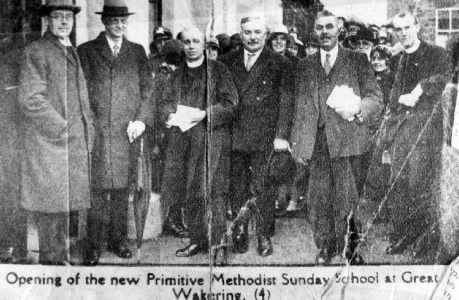 We turn now to the emergence of Methodism in Great Wakering, bearing in mind that the firm tradition of Puritanism in the area was probably one reason early Methodism was not established there; though its remoteness may have been a principal reason. It was Primitive Methodism which came to Great Wakering. The Primitive Methodists were a spontaneous evangelical branch of Methodism, which arose in the 19th century. They were proud to call themselves "the great working class church". Taking account of the character of Great Wakering at the time, it is not surprising that it was Primitive Methodism which took root in the village.
We turn now to the emergence of Methodism in Great Wakering, bearing in mind that the firm tradition of Puritanism in the area was probably one reason early Methodism was not established there; though its remoteness may have been a principal reason. It was Primitive Methodism which came to Great Wakering. The Primitive Methodists were a spontaneous evangelical branch of Methodism, which arose in the 19th century. They were proud to call themselves "the great working class church". Taking account of the character of Great Wakering at the time, it is not surprising that it was Primitive Methodism which took root in the village.
It was in the 1860's that the brickfields, Landwick and later Millhead, were opened and twenty seven sailing barges were employed at one time to carry bricks to London and elsewhere. It was certainly a thriving working class community, with more than 600 men and boys employed. Another indication of the character of the place was the fact that Great Wakering had the first Labour Parish Council in Essex, with at least three members of the Primitive Methodist chapel, Alfred Belton, Walter Jeffries and Lewis Everard, being elected. Walter Jeffries and Alfred Belton were also Local Preachers and their names appear in the list of Trustees appointed in 1938.
Beginnings
A souvenir published at the time of the opening and dedication of the first pipe organ in the chapel at Great Wakering at Easter 1920, gives some facts about the origin of the cause. Mention is made of those who by their strenuous efforts pioneered the Methodist witness in the village. A mission was conducted by the Rev. John Guy, but there were probably cottage meetings sometime earlier. Associated with John Guy were George Lappage, James Monk and others. Reference to preaching in the streets, singing gospel hymns and preaching was obviously in the tradition of Primitive Methodist Camp Meetings. Indeed, camp meetings were held in Oliver's Meadow, as also were Sunday School treats until later children were conveyed in wagonettes to Hockley Woods and elsewhere. Before an old bungalow cottage at the west end of the village was used as a meeting place, "services were held in the open streets and fields" and many cottages in the village were the scenes of "glorious services and prayer meetings". It is believed that it was in 1856 that these first signs of Primitive Methodism were to be seen at Great Wakering.
Daniel Wendon
The names of some of the early leaders are not lost. Two of these were Samuel Taylor and there was a Mr. Hills who helped but perhaps the most significant of them all was Daniel Wendon. He was born in 1832 in a cottage on the Priory estate at Prittlewell, where his father was a gardener to Lord Scratton. Soon after Daniel's birth the family moved to Burton's at Barling, where his father found work as a labourer. Daniel's education relied on his mother, who taught him to read and write, and this was supplemented by a fortnight's tuition at a Dame School. He started work at the age of seven as a rook-scarer on the fields at Burton's. The few pence he earned supplemented the meagre family income at a time when the average wage for a farm labourer was eight shillings a week.
In 1853 Daniel achieved manhood, and earning a man's wage he married. He also joined the militia, which proved an important step, for he was called up to Colchester during the Crimean War. Here he first heard a Primitive Methodist preacher. When he was twenty-six, the Rev. John Guy came to preach in the High Street at Great Wakering. "This is what I want" Daniel said. He started preaching immediately, and gathered together a small group of people to be the first Primitive Methodist society in the village. A small cottage behind Freda Grigg's shop was purchased to be used as the first chapel.
By this time Daniel Wendon was employed as a labourer at Abbott's Hall farm and lived in a lodge at the farm gate. When his employer heard what he was doing, he dismissed him, declaring they would not give employment to a "Ranter". He was immediately ejected from the lodge and his household possessions were dumped in the middle of Barrow Hall Road. When a member of the Primitive Methodist society heard of his plight, a horse and cart was borrowed and Daniel and his family and possessions were installed in the "chapel". They lived there until the first chapel was built in 1859, and then became tenants of the adjoining house which was intended as a manse. Under his guidance and outstanding preaching gifts the church grew. Daniel obtained work as a hay and straw binder, but he seldom earned more than fifteen shillings a week. This meant a life of poverty for him and his family. One Sunday morning he had no money left for the collection. He was so upset that he decided not to go to the service. One of his family persuaded him to go, and on the ground outside his door he found a three-penny piece. Believing God had provided he went to the chapel.
Commitment to preaching
His commitment to preaching was total. He would work all day and then walk to Rochford, Prittlewell or Barling to hold meetings in the evening, returning home to a supper of dry bread. As a Local Preacher he took services on Sundays all over the Maldon circuit, walking to his appointments and often not arriving home until early on the Monday morning. The route from Great Wakering involved walking to and across Potton Island, then hiring a boat or taking a ferry to Burnham. This involved a fourteen mile walk there and back. An incident was recounted by the late Alfred Belton's father William. He remembered as a eight-year-old boy going with Daniel and another preacher. At midnight, on the way home, Daniel was exhausted and with great difficulty the eight-year-old boy and the other preacher virtually carried him home.
Daniel Wendon's concern for saving souls led him to mission in the brickfields. Here the "brickies" lived in unbelievable squalor in rows of hideous little weatherboard shanties. Beer was sold in several of these shanties, resulting in brawls and drunkenness. One summer evening Daniel took several children with him to help with the singing. No sooner had he started the service than there was a barrage of rubbish. He told the children to stand down in a dry marmpit out of the way of the missiles. He continued to preach and in a matter of seconds there was silence. Some of the converts that night became leaders in the chapel. Among his first converts were Peter Jeffries' paternal grandparents, Philip and Lucy Jeffries, who later became founder members of Little Wakering Primitive Methodist Chapel. Daniel Wendon died in 1911 of cancer at the age of seventy-nine. A plaque in the chapel is a tribute to the debt owed to him for his pioneering work. The main source of these notes was Mrs. Jessie Chandler, Daniel's daughter.
The need for a chapel
Following the period when the Primitive Methodists maintained their witness in the open air and in cottages, the time came when there was evident need for a chapel. The first was built in 1859, and it is known that Daniel Wendon actually preached in it before the windows had been fitted. The money for the cost of this building was raised by a loan, by this "working class church". It is a testimony to their commitment, that from their meagre wages and resources, they were prepared to make long term sacrifice to provide a chapel for worship and witness.
Progress and challenge
The time came when the original chapel proved too small. The need for a new chapel is borne out by figures for church attendance in a census in 1903 in the various places of worship in the village. The source of this information was the 160th anniversary programme of the United Reformed Church published in 1982:
Morning Evening Total
Church of England 063 143 206
Congregational (URC) 157 085 242
Primitive Methodist 174 121 295
Peculiar People 127 066 193
Salvation Army 141 130 271
Mission Hall 117 060 177
779 605 1384
The population of the village in 1901 was 1820.
In 1904 a piece of land was bought and in April 1906 the stonelaying of the new chapel was held with the opening in June. This was reported in the Southend Standard on the 28th June 1906. It was designed by Mr. C. Cooke, a Southend Architect, and built by Mr. Burrell of Great Wakering. The chapel which had a seating capacity of over 270 was opened by Mrs. A. M. Kimsley. Following the opening ceremony there was a service at which the preacher was the Rev. T. Meaken of London.
The cost of the premises was £700 towards which £257 had been raised by the opening. In 1930 the schoolroom was added. Until then tea meetings and social events of various kinds were held in the chapel.
Improvements
Various additions and improvements have been made to the premises. One which Peter Jeffries especially remembers was the purchase in 1938 of an electric blower for the organ, because it dispensed with his services as an organ blower. The blower came from the Pleasant Primitive Methodist Church near the seafront at Southend. A major improvement scheme was completed over a period of years, made possible by the use of the proceeds of sale of Little Wakering chapel. One evident improvement was the extension of the Communion area in front of the pulpit, and the provision of new chairs for the congregation. An interesting observation is that the "P.M." tradition was maintained - no communion rail was installed. The elements are distributed to the members of the congregation where they sit. Splendid new kitchen and toilet facilities were created, making a typical village chapel well equipped for the future. Of course, the two old tortoise stoves which heated the church had been dispensed with years before and central heating installed in 1930.
Mr. and Mrs. Albert Milbourn were generous and influential members, as was Mr. Herbert Burgess, a bricklayer who built the schoolroom, and Mr. Albert Bishop and George Hookey. Walter and May Jeffries, parents of Peter Jeffries, were leaders and Sunday school teachers.
A list of the Trustees appointed in 1938, records the names of those who gave leadership to what many regarded as the strongest of the Primitive Methodist Churches in the areas. It was first in the Maldon circuit, and then in the Southend circuit when it was created.
- A. E. Milbourn Farmer
- T. Everard Brickmaker
- H. Burgess Brickmaker
- S. Chaplin Corn Chandler
- W. Rivers Thatcher
- G. Hookey Market Gardener
- W. Chandler Carpenter
- A. R. Bishop Draper
- W. Galley Corn Chandler
- A. J. Belton Blacksmith - Gas Company
- W. Jeffries Water works ferrule inserter
- A. G. Baker Plumber and decorator
- L. Everard Water works engine driver
- R. Belton WD. worker
- A. J. Wilding Wholesale grocer
- L. Hookey Market gardener
- S. T. Galley ?
- E. Belton Carpet layer
Among the Local Preachers remembered as being associated with Great Wakering were Daniel Wendon, William Belton, Albert Milbourn, Thomas Everard (Junior), Walter Galley, Walter Jeffries and Alfred Belton. The Class Leaders in 1941 were Mr. W. Rivers, Mr. H. Burgess, Mrs. L. Everard, Mr. B. Baker, Mr. A.E. Milbourn, Mr. C. Milbourn and Mrs. W. Jeffries. In 1947 Peter Jeffries was approached to be a class leader, although at the time he was serving in the RAF in Singapore.
Poignant memories
This appropriately introduces a reference to a poignant happening which affected the membership at Great Wakering. On the 21st September 1944 Philip, Peter Jeffries brother, was reported missing in War service. In December 1945 his parents were informed by the War Office, that he must now be listed as having been drowned at sea in the sinking of a Japanese transport. This was not only a grievous loss to his parents and family but to the church. He was regarded as a brilliant young boy and as a young man was prominent in church activities. He was captured in December 1941, survived the Thai building of the railway and was being taken to Japan when the ship was sunk by an American submarine. His parents showed the strength of their Christian faith when they became the first in Wakering to entertain German prisoners of War from the camp on the Common, from where they were allowed to attend places of worship. Two, Helmut Benecke and Werner Lustenberger regularly attended the chapel. These references to the War should include the fact that in 1940 the chapel was damaged by a German parachute mine.
An organ is built
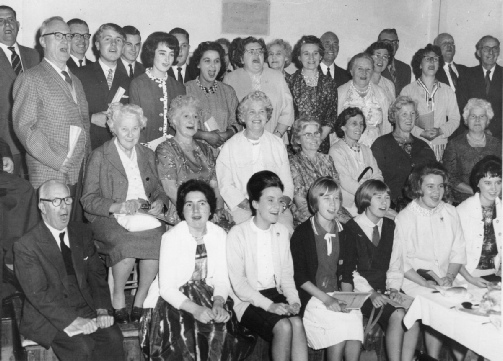 This account of Methodist church life at Great Wakering cannot end without a significant reference to the part that music has played since the very beginning of the story. Initially a harmonium was in use to lead the singing. When the "new" church was built in 1906 it continued to be used until 1921, when a new organ was installed. At a cost of about £300 the church acquired a two manual organ with pedals. In 1953 it was decided to have the organ overhauled and improved at a cost of £536.
This account of Methodist church life at Great Wakering cannot end without a significant reference to the part that music has played since the very beginning of the story. Initially a harmonium was in use to lead the singing. When the "new" church was built in 1906 it continued to be used until 1921, when a new organ was installed. At a cost of about £300 the church acquired a two manual organ with pedals. In 1953 it was decided to have the organ overhauled and improved at a cost of £536.
In 1981 it was decided to have the organ serviced and further improved. The original quotation from Martin Cross of Grays was £2,000. However, it was discovered that the pedals were riddled with woodworm. Its replacement added £300 to the original price. The pedals were put on an electric action, thus doing away with the old combination pistons and a new sound board was installed to contain these extras. It is interesting to record that in the 74 years between 1921 and 1995, apart from tuning, only £2,836 has been spent on the organ, which is now insured for £16,000
The first organists were Mrs. Everard and Mrs. Belton. Sadly Mrs. Belton died in 1933 at the young age of thirty-four. To help Mrs. Everard the Trustees appointed Mrs. Belton's Sister Mrs. Baker and 13-year-old Fred Galley as assistants. Four years later, on the advice of his tutor, Fred was appointed organist at Woodgrange Drive Church in order to gain experience. In 1947, Mrs. Baker having died and Mrs. Everard wishing to retire because of failing sight, Fred was invited to return to Great Wakering as organist and choir master. At that time the choir numbered about twenty. They sang an anthem at every evening service and united with Woodgrange Drive choir in singing Cantatas. Synonymous in many ways with Fred Galley was his wife Gwen. She not only shared his musical interests, but was known throughout the Southend circuit for her unceasing interest in Women's Work and subsequently Network. She died after a long and painful illness in 1993.
Making music
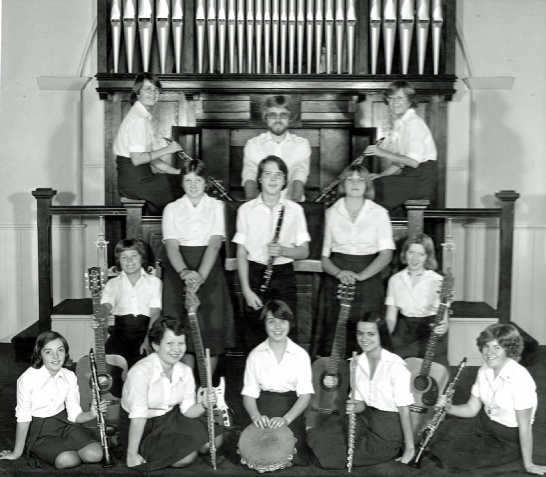 In 1968, after hearing a choir of children at Chalkwell Park Methodist Church, Fred's son Terry recruited volunteers from Great Wakering to form a Junior Choir. They committed themselves to a practice every week and attendance at morning worship. For many years, with few exceptions, the Junior Choir contributed a musical item every Sunday morning. Over the years, numbers in the choir have ranged from six to thirty members. The Youth Choir, as it became known, was able to introduce new and less well-known hymns and songs. Unfortunately dwindling numbers meant that, as with many other choirs, it reached the end of the road. An ecumenical group, "Sweet Melody" was formed in 1974. The purpose of the group was to spread the gospel message and this has been a spectacular development. By the time it ceased to be viable because many members were away, "Sweet Melody" had performed at over 125 functions. In 1988 some of the group re-formed to sing at Wesley's Chapel on Aldersgate Sunday to celebrate the 250th anniversary of John Wesley's conversion.
In 1968, after hearing a choir of children at Chalkwell Park Methodist Church, Fred's son Terry recruited volunteers from Great Wakering to form a Junior Choir. They committed themselves to a practice every week and attendance at morning worship. For many years, with few exceptions, the Junior Choir contributed a musical item every Sunday morning. Over the years, numbers in the choir have ranged from six to thirty members. The Youth Choir, as it became known, was able to introduce new and less well-known hymns and songs. Unfortunately dwindling numbers meant that, as with many other choirs, it reached the end of the road. An ecumenical group, "Sweet Melody" was formed in 1974. The purpose of the group was to spread the gospel message and this has been a spectacular development. By the time it ceased to be viable because many members were away, "Sweet Melody" had performed at over 125 functions. In 1988 some of the group re-formed to sing at Wesley's Chapel on Aldersgate Sunday to celebrate the 250th anniversary of John Wesley's conversion.
In 1984, again under the leadership of Terry Galley another choir was formed at a local primary school. It took its name from its first show at the Southend Cliffs Pavilion - "From Rock to Rock", which traced the history of music through the ages. The addition of the adult choir at Great Wakering Methodist Church made it easier to move the base, organisations, rehearsals and performances from various venues to the church. When Terry became Deputy Headteacher at Bournes Green Junior School, the choir changed again – this time to support the school choir in 2 major productions each year, summer and Christmas.
Among its accomplishments it has produced a cassette, "Love and Compassion", featuring a song composed by Terry, commenting on the loving, caring attitudes shown by staff throughout the Hospice movement in general, and more specifically at "Fair Havens" the local Hospice at Westcliff. Proceeds from the sale of cassettes were to be added to money already raised. The Rock On choir was retired in 2012 when Terry retired, having raised nearly £35,000 for Fair Havens and other charities.
Another group was formed in the 1990’s, The Gospel Gang, which carried on where Sweet Melody finished and regularly sung at services and events. This consisted of 7 young people at the church singing and playing keyboard, drums, bass and percussion. This stopped when most of the group all went off to college/university in the same year. Great Wakering Methodist Church is an example of how village Methodism has not only survived but has adapted to new opportunities.
Little Wakering
Besides the cause at Great Wakering, there was also one for many years at Little Wakering. This began in a small wood building at Barling, which was moved in sections to a site in Little Wakering in possibly 1888. This was replaced in 1935 by a permanent chapel, but the original building was retained for Sunday school work. Throughout the whole of its history in addition to Philip and Lucy Jeffries, the Clarke family were the mainstay of the cause. Joseph and Emily Clarke had four children Charles, Mabel, Eva and David. All were fully engaged in the life of Little Wakering chapel. The brother of Mrs. Clarke was Mr. Isaac Outten who led a strong Sunday school.
Special mention must be made of Charles and Mabel. Both became Local Preachers, Mabel when she was eighteen, at about the same time as she began training as a nurse, which calling she fulfilled all her working life. Charles became well-known as an evangelical minister and was in demand as an evangelist. He had several books published on the history of revivals. In retirement he lived at Little Wakering where he died. The church at Little Wakering was closed in 1989, and the property sold. The Society united with that at Great Wakering. Here a living church continues to maintain the historic witness of Methodism.
Gallery of Pictures
We are thankful to Terry and Jacquie Galley, who have submitted a good selection of photographs dating from 1905 to 2019. Eighteen of those photographs are highlighted below, just left-click on each photograph to see an enlargement. Most of the photographs below include a suggestion where they are loosely referenced in the article, apart from the last five which are not referenced.


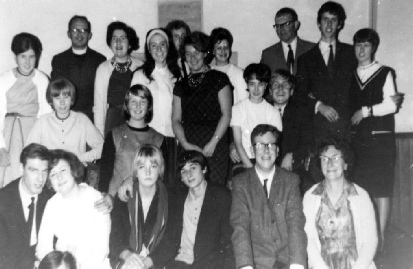



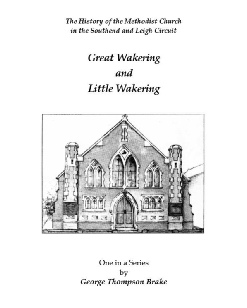
![The History Of Great and Little Wakering Methodist Churches [Publication Details] The History Of Great and Little Wakering Methodist Churches [Publication Details]](wpimages/wp0116a13a_05_06.jpg)
